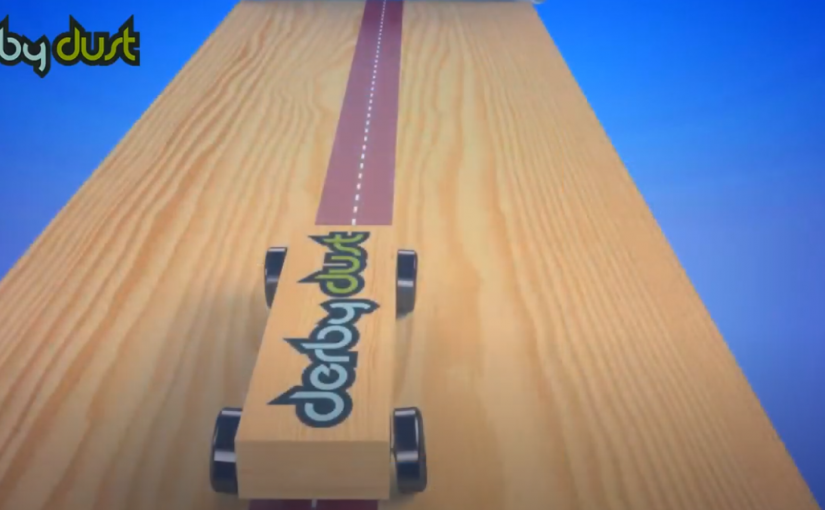Adjusting your car for Rail Riding Rider Pinewood
This video shows the entire process from start to finish on how Rail Riding Rider Pinewood derby car. There are many videos on YouTube that present the same overall goal that may do or say something slightly different in a way that will allow you to grasp the concept if my method is confusing. I believe there are not great written details on how to make these rail rider adjustments. The concept is extremely hard to verbalize. Videos are much better.
We adjust axles to have an influence on our wheel configurations. These configurations influence the way your car will race. Overall goal is to adjust each rail riding axle to make wheel adjustments in very precise alignments so that they all work together. Simply adding bent axles without adjusting them is a disaster and highly not recommended as you will have negative results. You either go all the way with the adjustment, or do not do it all. There is no “close enough” middle ground when making a rail riding derby car.
I will go into greater detail about the specifics later, but this is the general knowledge needed to determine if you want to utilize this build technique for your derby.
Notes to Consider when Rail Riding
- We first adjust the rear axles, one side at a time. Once both are adjusted, you then adjust the front axle for proper drift / steer.
- Adjusting the rear rail rider axles will also change the steer of the car. Consider any bent axle will steer the car.
- You can NOT adjust a straight axle. An axle must be bent for it to be adjustable.
- Configurations for the front and back are NOT the same, but opposite of each other.
- Please note that EACH wheel has 2 positions which must be adjusted correctly by rotating the axle. Simply because you have the correct camber, does not mean you have the correct toe alignment for your rail riding. So, pay attention to both positions for each wheel.
- Rear wheels should be negative camber with slight toe out until wheel rides on head of axles
- Steer wheel should be positive camber toe in adjusted until desired tuning arch
Pinewood Derby Alignment Definitions
Note that adjusting the rail rider axle will adjust the wheel.
Wheel Camber – the adjustment of the amount of wheel tread is touching the track. No camber means the wheel is evenly flat to the track.
- Positive camber – the top of the wheel is further away from the body than the bottom of the wheel. Front steer should have positive camber
- Negative camber – the top of the wheel is closer to the body than the bottom of the wheel. Rear wheels should have negative camber
Wheel Toe Alignment– Relation of the wheel edge to midline of car.
- Toe-in – Wheel edge points towards car body. Front steer should have toe in position
Toe-out – wheel edge points away from car body. The rear axles should be adjusted until the wheel has the proper amount of toe-out that it will always ride against the axle.

